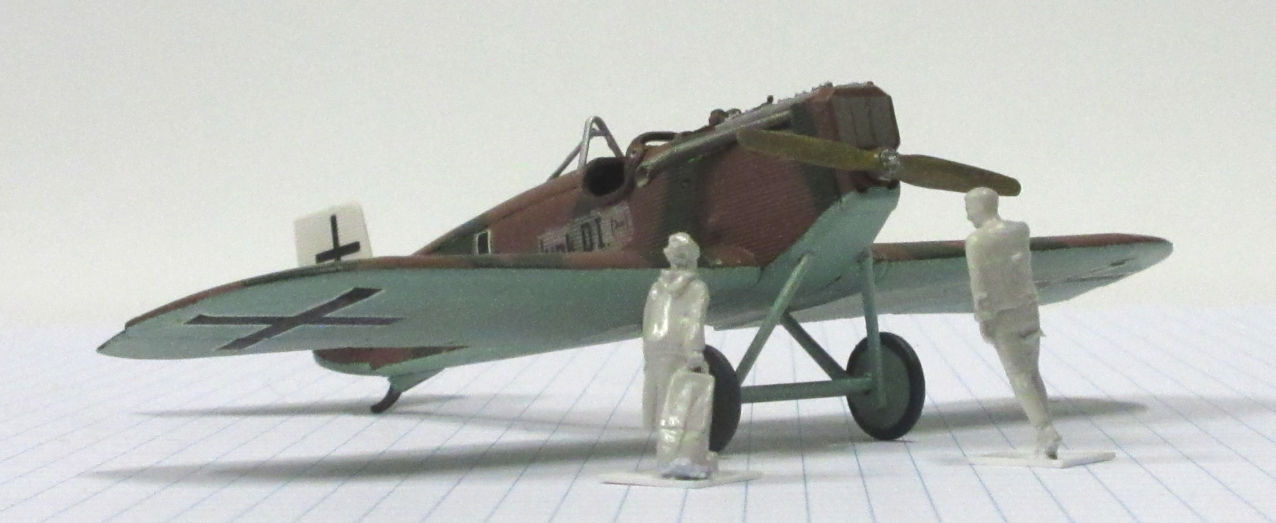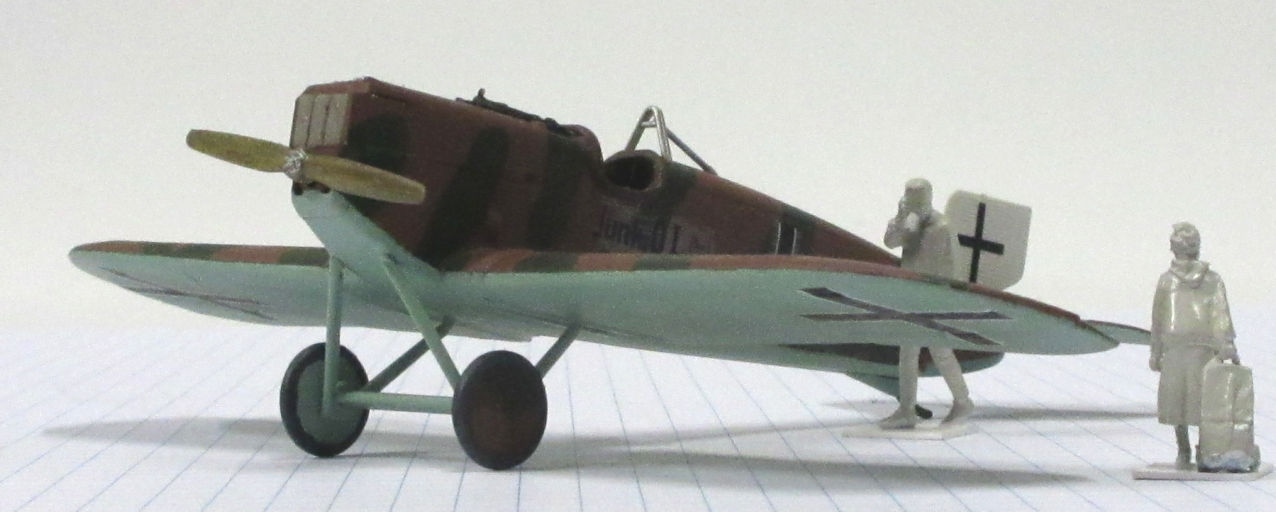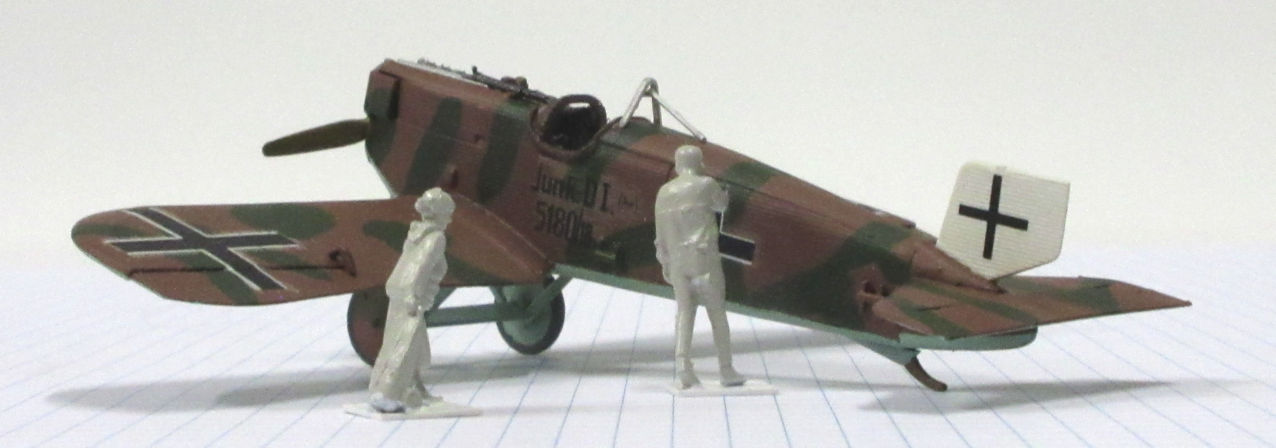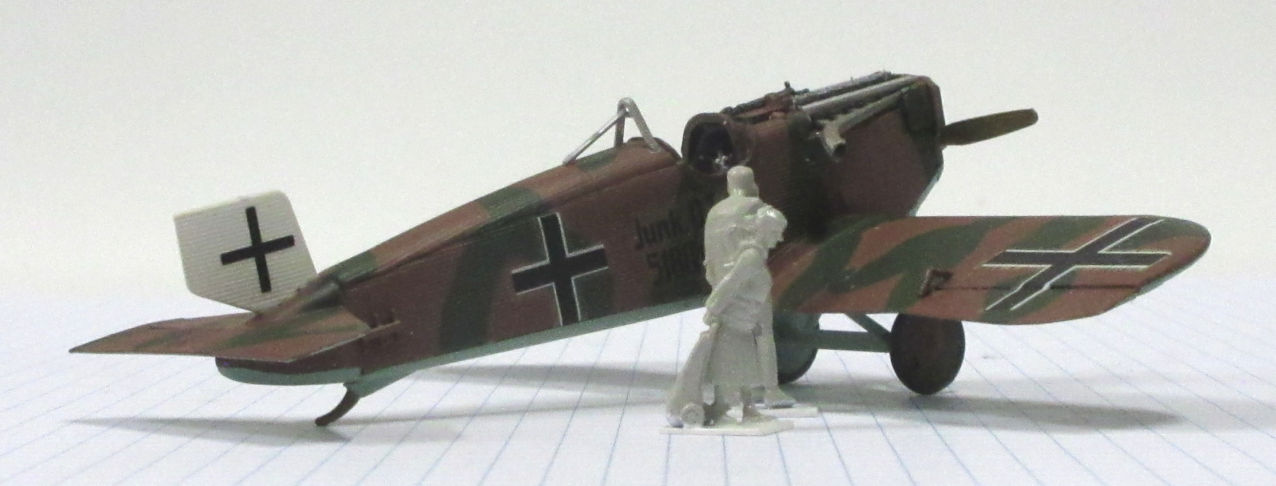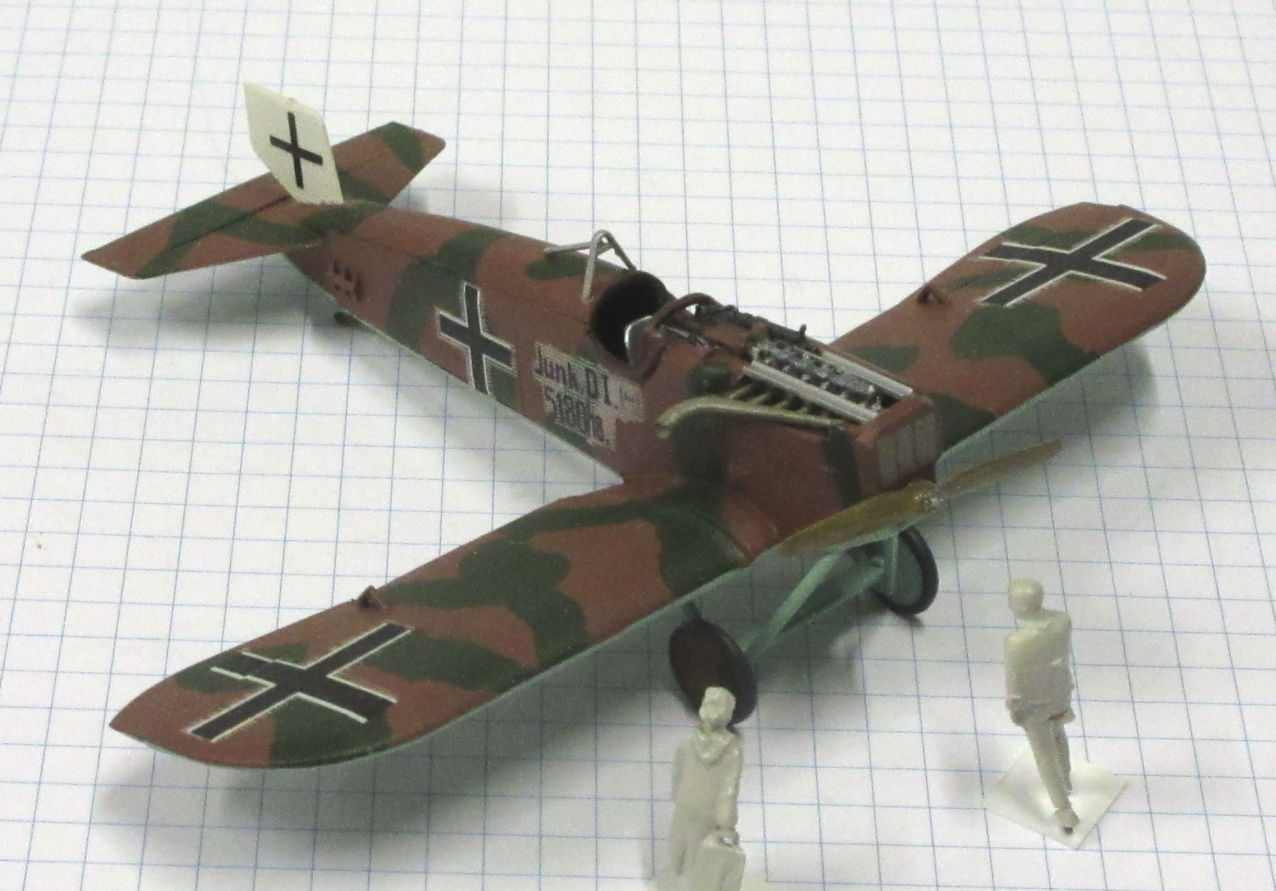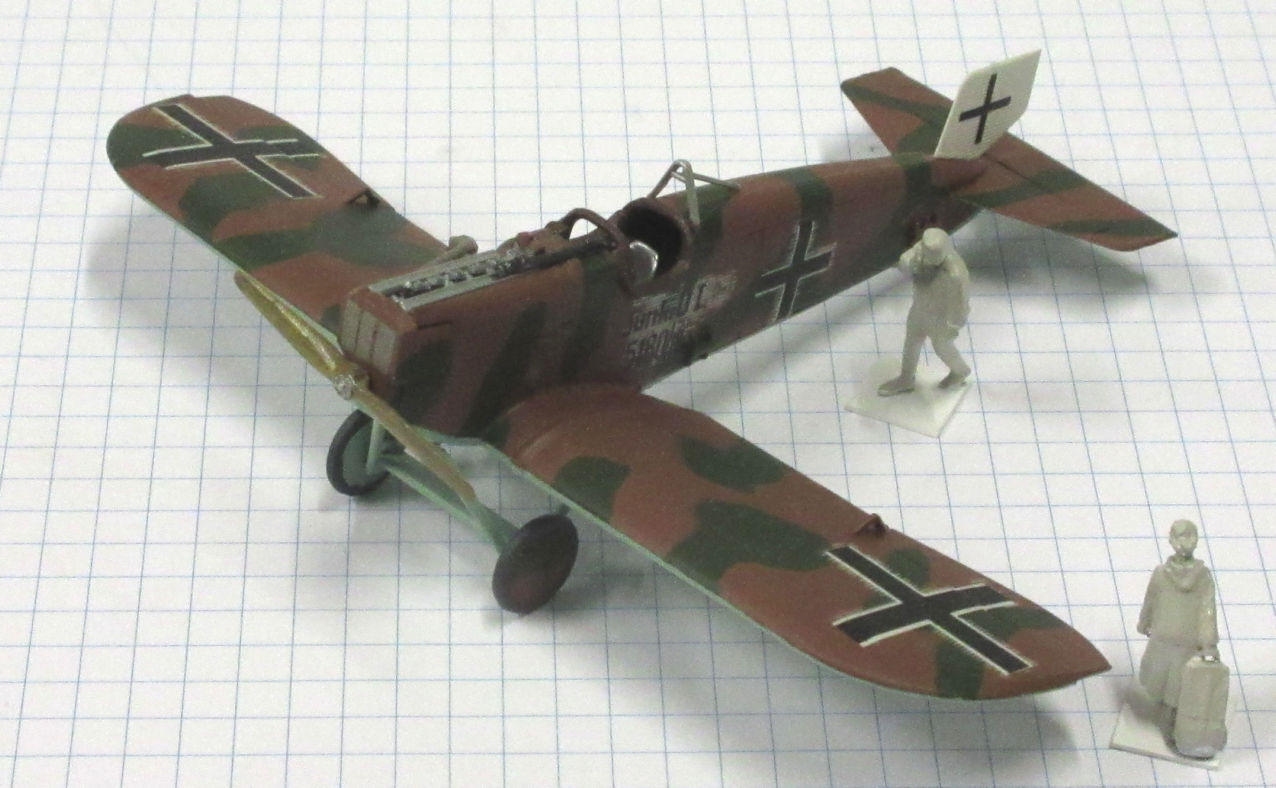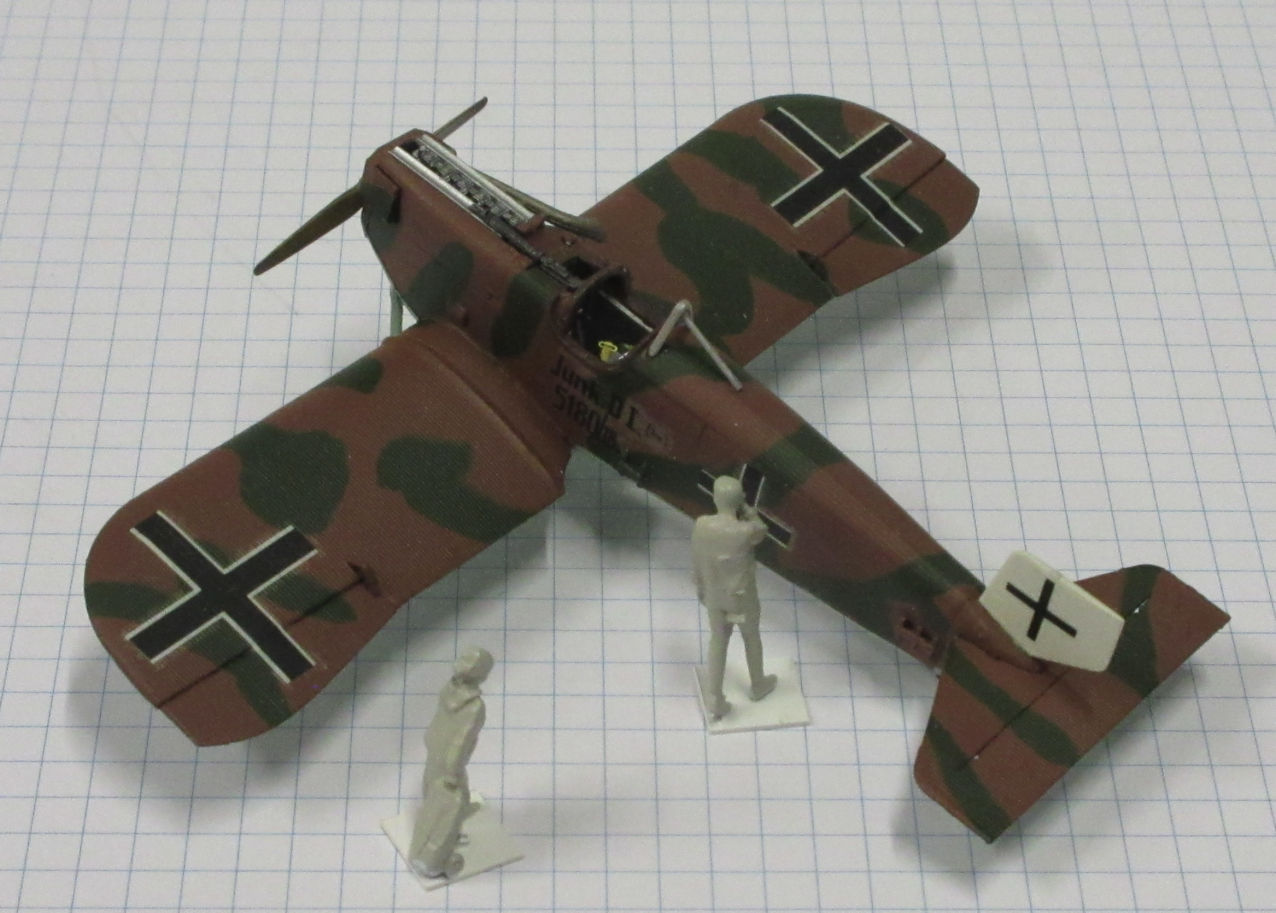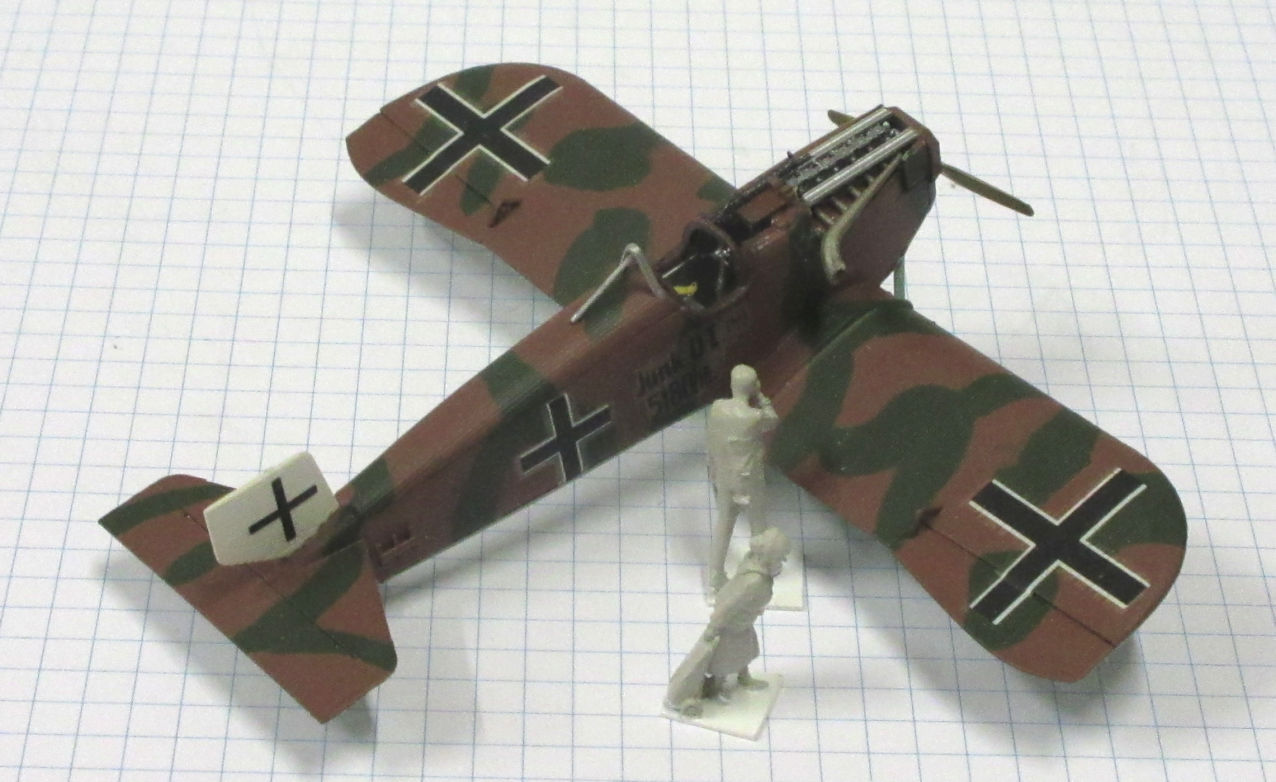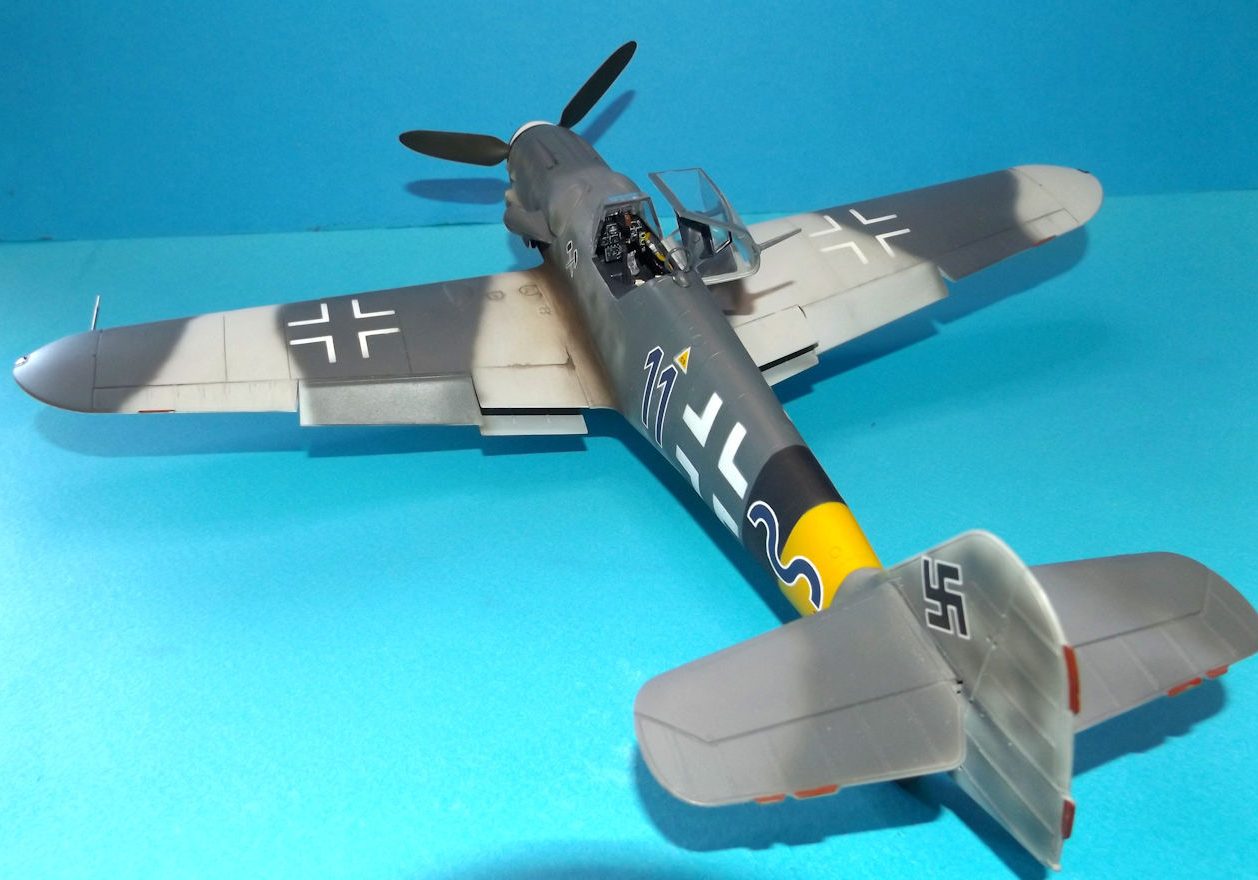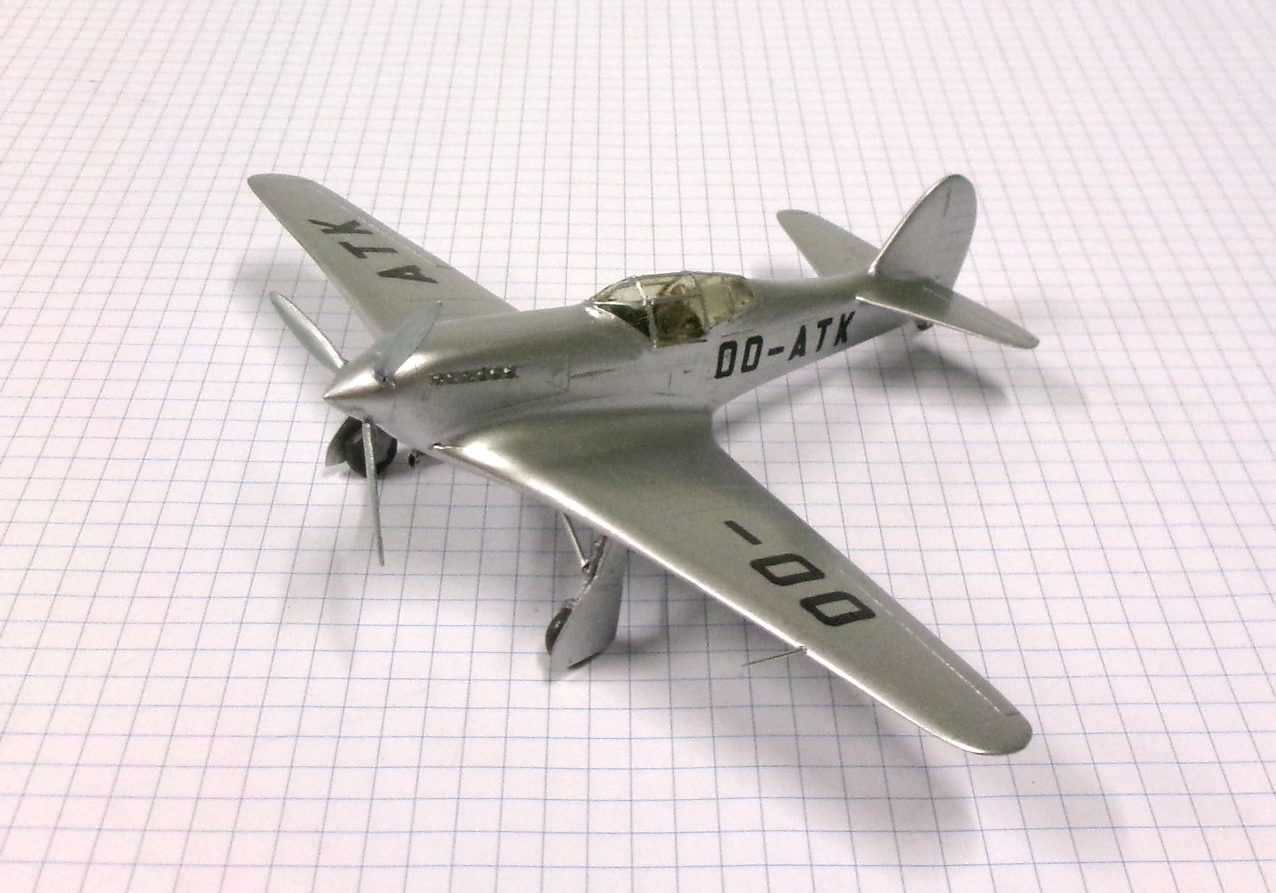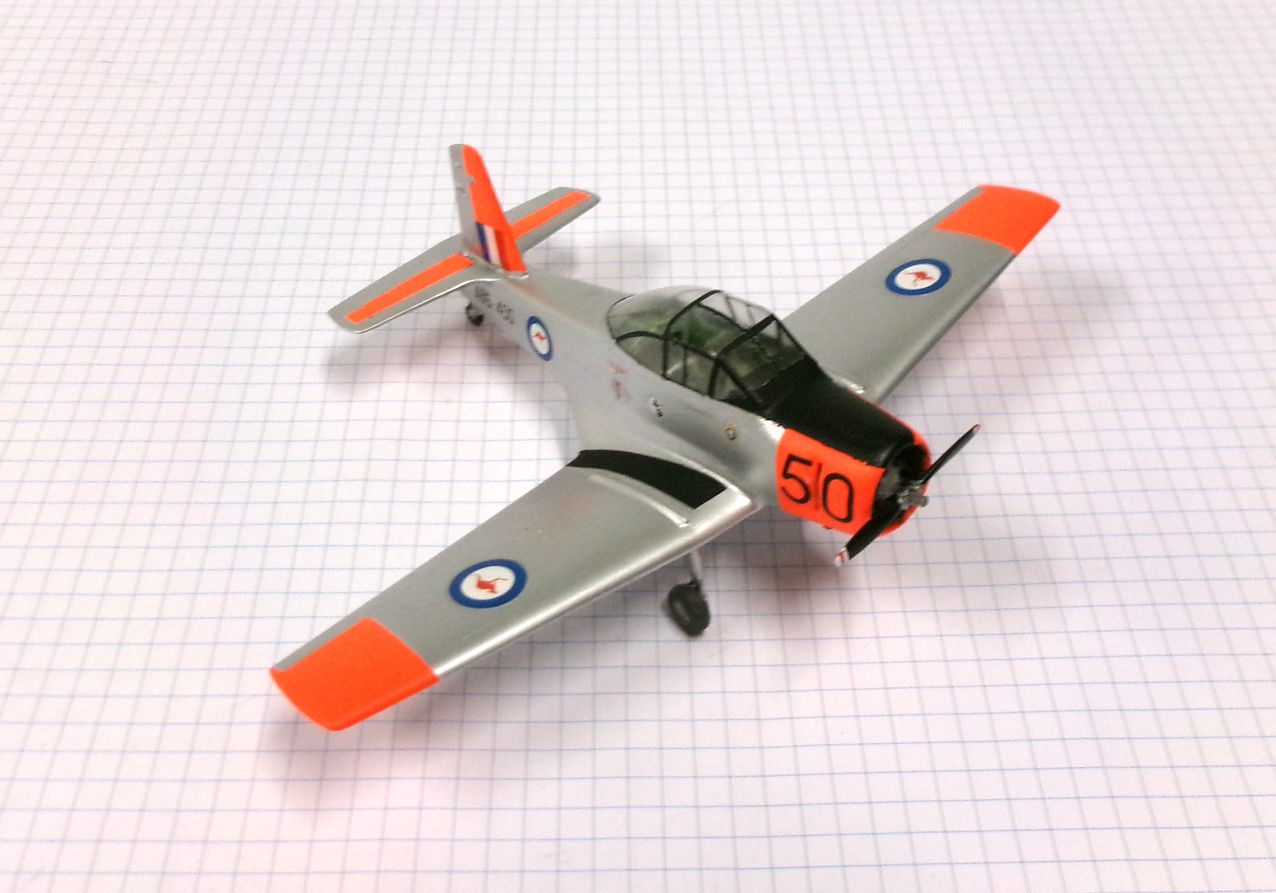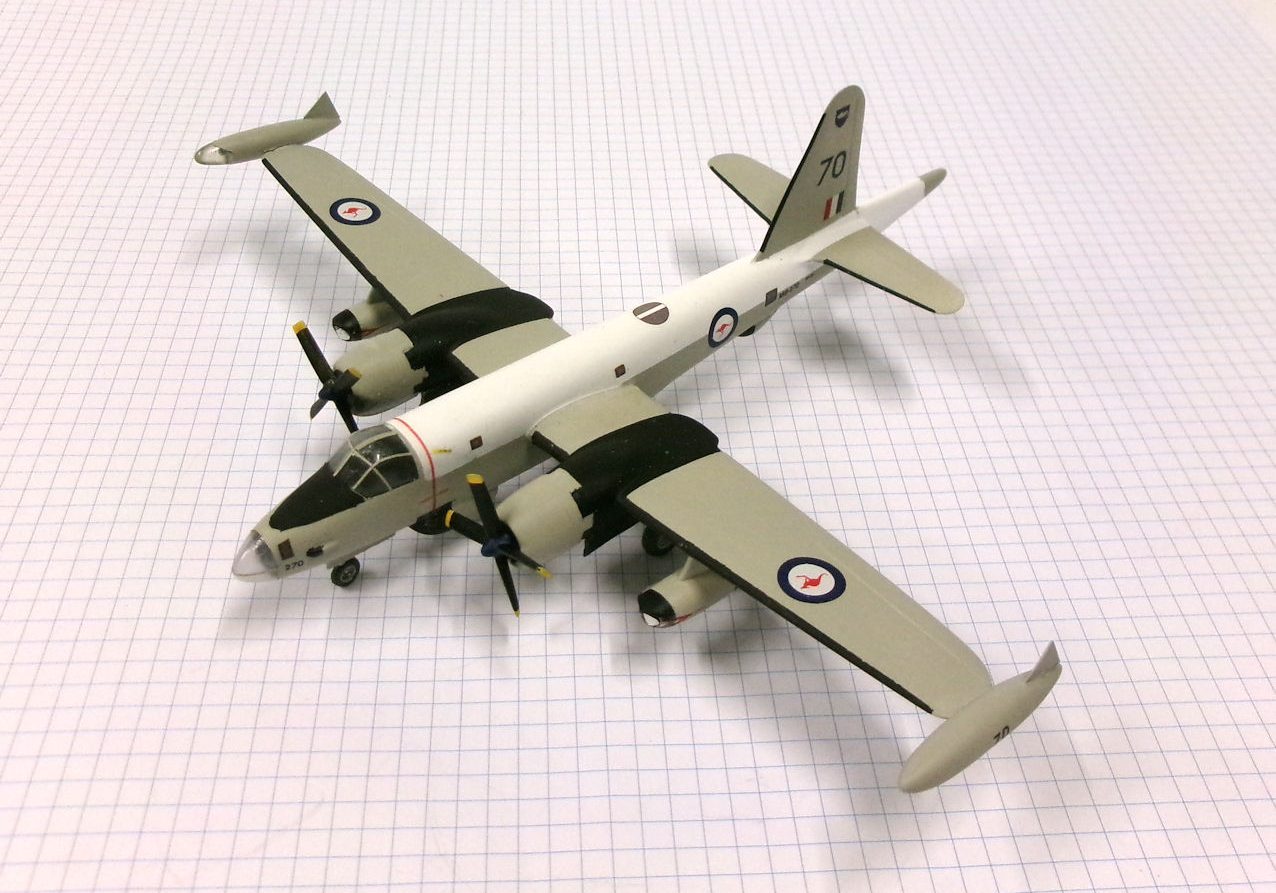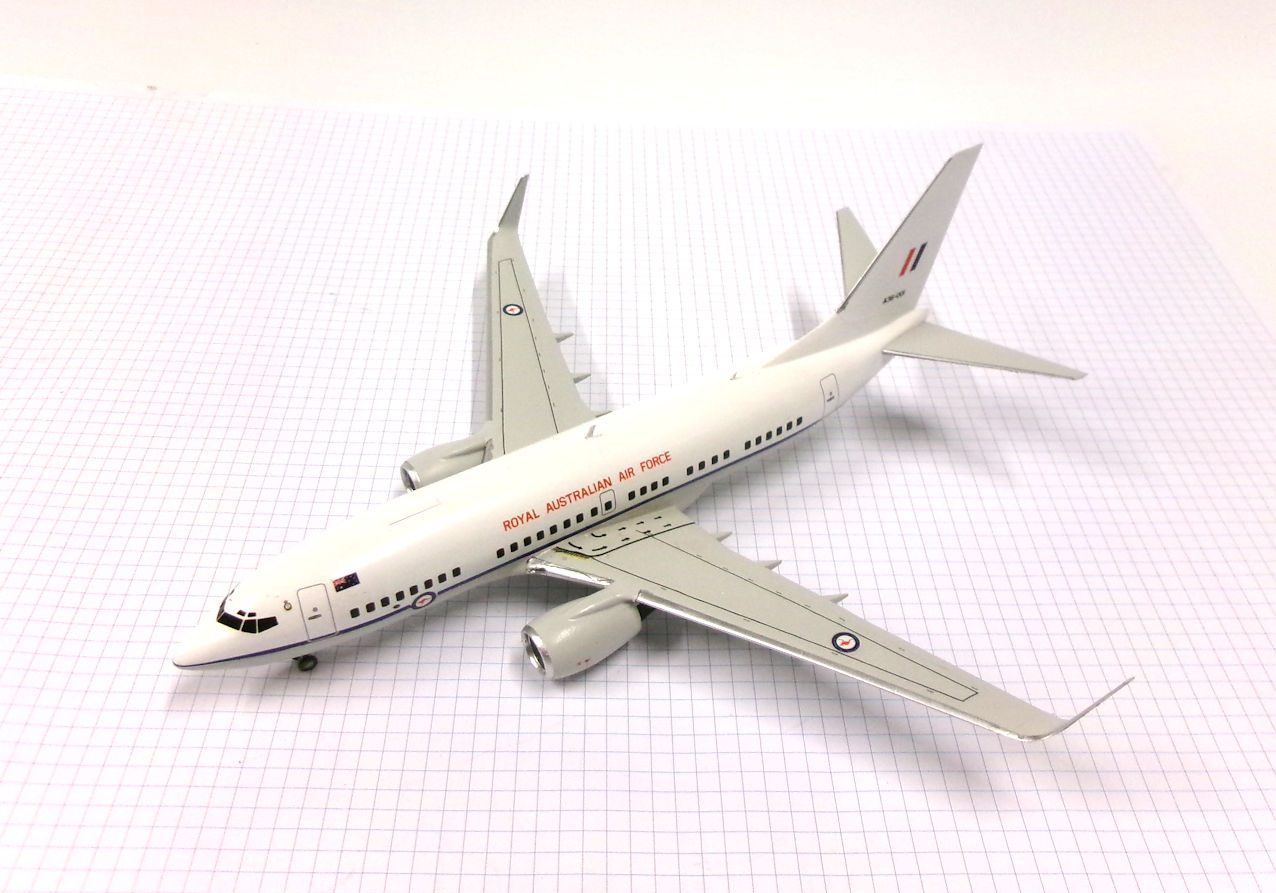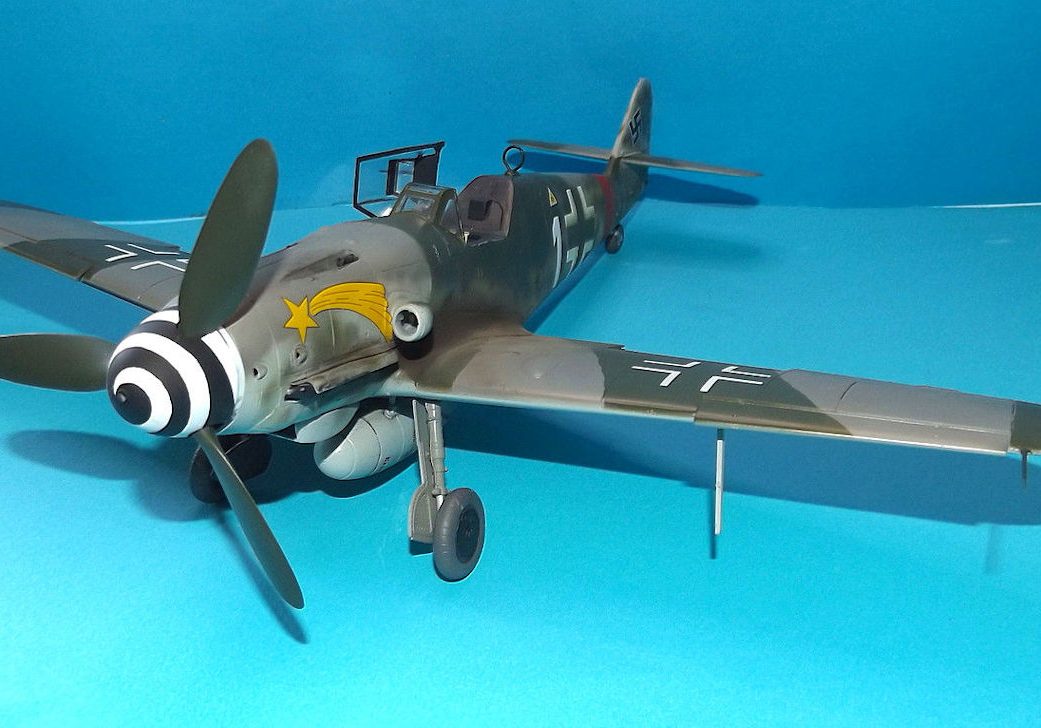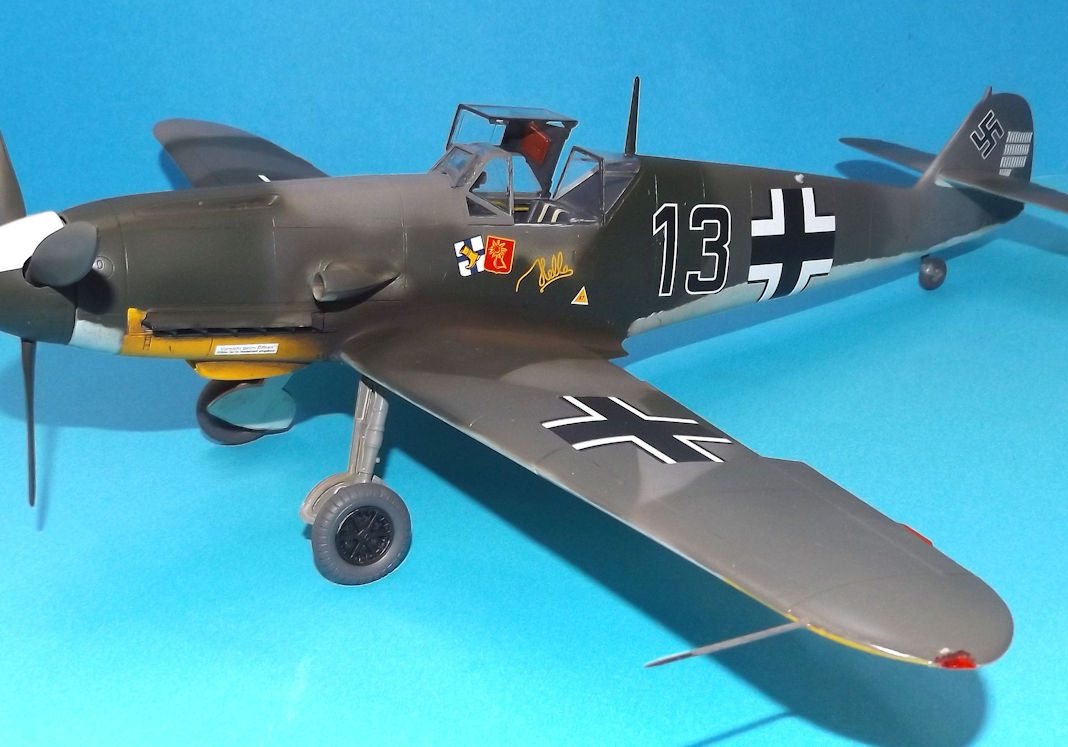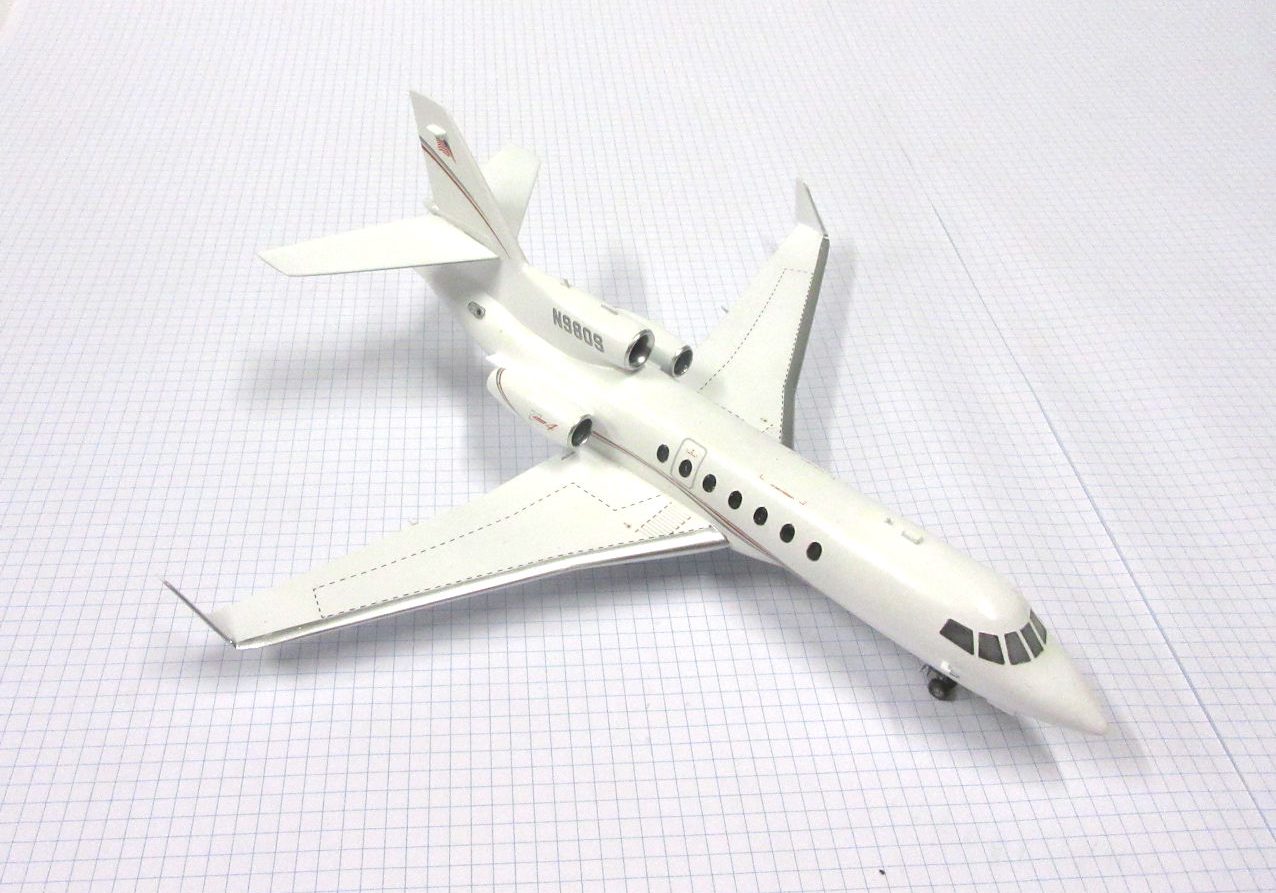History
The Junkers D.I was the world’s first all-metal fighters. It performed very well but only a few had entered service by the end of World War I. It was almost another 20 years before all-metal fighters again entered service.
Hugo Junkers patented the idea of a metal aeroplanes clad in corrugated aluminium in 1912 and developed the idea in following years.
The D.I, that flew first in September 1917, was heavier than contemporary wood and fabric fighters and pilots were suspicious of it.
However, the German Air Force ordered 40 in July 1918 and 12 had been manufactured by early 1919.
A handful arrived in the Flanders sector of the Western Front in October 1918 but they were too late to take much part in the fighting.
However, in that short time, their robust characteristics showed the value of this new kind of aeroplane.
This model represents a D.I on the Western Front in October 1918.
Roden 1/72 kit completed by Leigh Edmonds April 2006.
